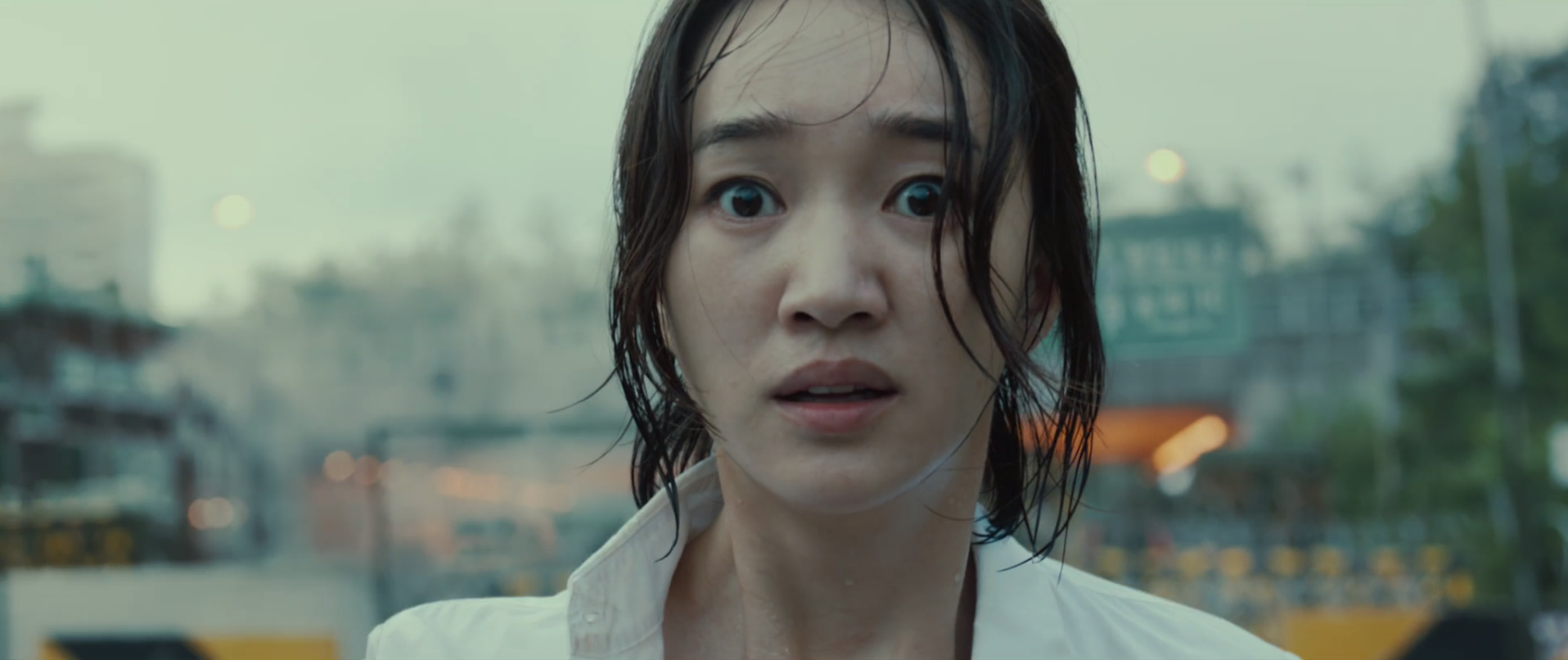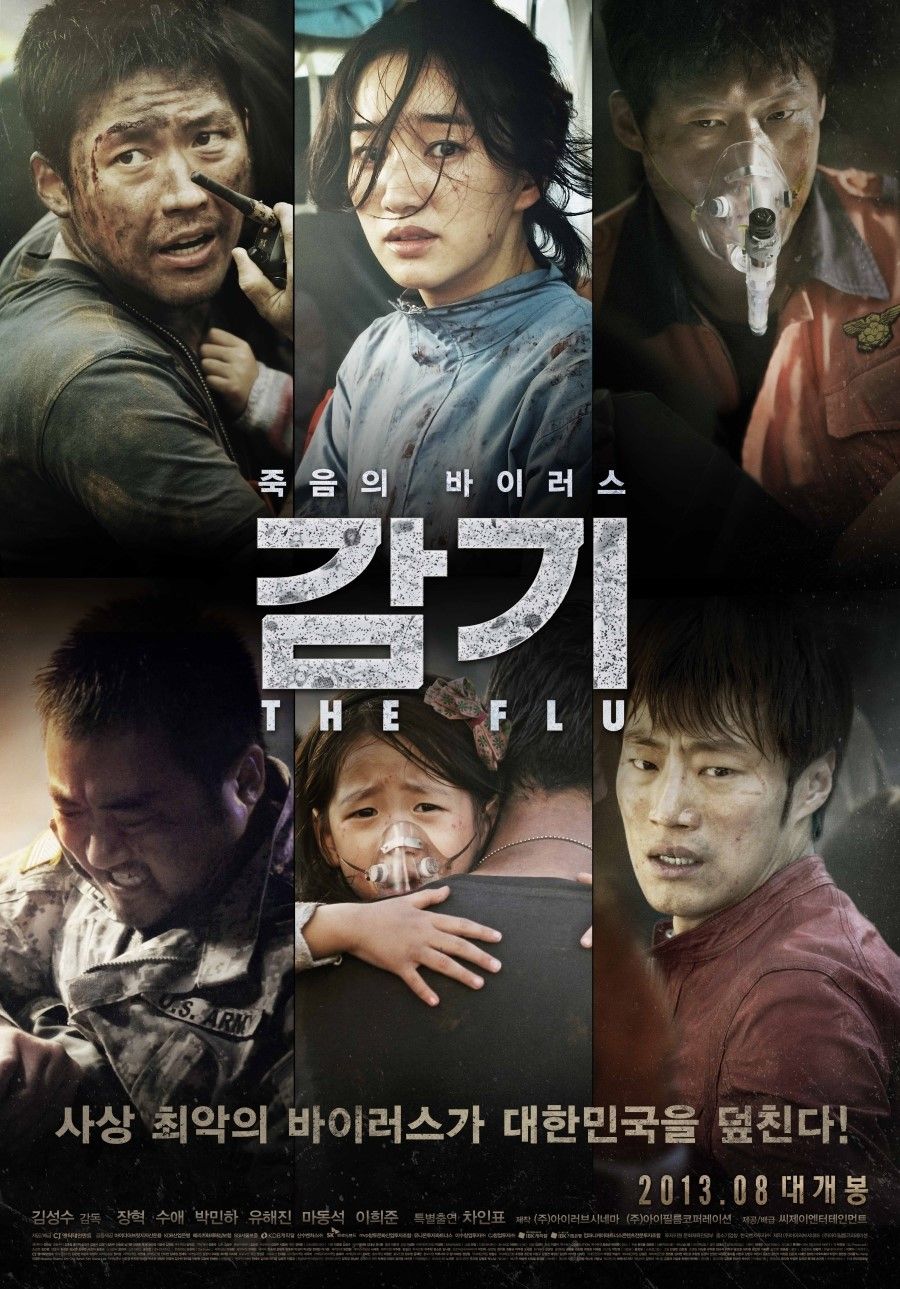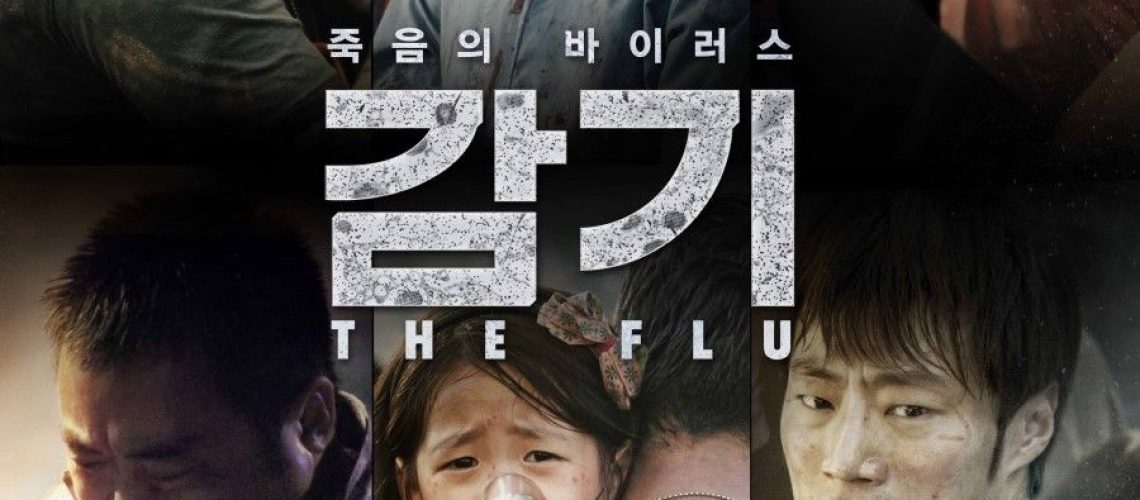If you need to know one thing about Flu (2013), know that it tries very, very hard to convey to its audience the importance of treating people with dignity and humanity — and that within the first five minutes, it fails in the most hamfisted of ways.
It might seem like a strange choice to review a disaster film for a SFF column, but when you think about it, disaster films also take a premise based on scientific facts — in this case, an epidemic — and extrapolate it to an extreme level. Directed by Kim Sung Soo and written by Kim and Lee Young Jong, Flu imagines what would happen if a mutated version of the avian flu virus were to hit Bundang, South Korea. Infected patients die within 36 hours, sporting large rashes and vomiting blood, all of which results in mass panic and the inhumane detainment of Bundang’s citizens, who are all condemned to extermination by a political elite more concerned with saving their own skins than valuing the lives of the ordinary people.
At the center of Flu is Kim In Hae (Soo Ae), a doctor involved in the effort to find a cure for the virus; Kang Ji Goo (Jang Hyuk), an everyman rescue worker who crosses paths with In Hae after saving her from a car crash; and Mi Reu (Park Min Ha), In Hae’s daughter. And that’s where the movie really falters, because even while trying to tell a story about the grotesqueries of a callous government wholly unconcerned about protecting its people, it chooses the most respectable characters as the heroes of the story.

Flu wants us to see that when a government is helmed by craven men who only care about themselves, everyday people suffer the consequences. The movie lays it on thick: at the climax of the movie, we’re shown a bird’s eye view of a giant claw machine lifting masses of bodies and dumping them into a pit to be burned, regardless of whether some of those people, bagged in plastic like trash, are still alive. It’s monstrously wrong to treat people as if they’re disposable, Flu insists. And yet, it proceeds to do exactly that with the characters who are most marginalized.
Patient Zero of Flu’s outbreak is Monssai (Lester Avan Andrada), a young Filipino man who is trafficked into South Korea at the beginning of the movie. Unlike In Hae, Ji Goo, and Mi Reu, Monssai is an outsider. He’s Southeast Asian, and he lacks a family, a job, and even a legal presence in South Korea. Neither do we know much about him. Not his last name, not his background, not why, when we first meet him, he’s being shoved into a shipping container with other people to be transported like product.
Was he forced? Did he feel compelled by family circumstances to seek a way to make money, however dangerous? None of that matters, because Monssai’s role is, quite literally, to be the vessel of a cure to the epidemic. He’s the only survivor in the group, who were all infected with the virus in transit, and therefore carries antibodies crucial to formulating a cure (don’t ask me about the scientific accuracy behind this).
Monssai’s lack of agency in the plot is further reinforced by the fact that only Mi Reu refers to him by name. The doctors who find him refer to him as the “antibody carrier.” None of them asks him whether he consents to being taken to a lab, to be examined by strangers, or to have his blood drawn — all incredibly invasive procedures. And of course, nobody asks whether he’d like to return to his family once this is all over. In the end, Monssai is stabbed to death when he attempts to help In Hae reunite with Mi Reu, all without having spoken more than a few words. People are not disposable — unless, as the movie reminds us, they’re too marginalized to even be considered people with lives and loved ones and goals of their own in the first place. Then they’re just fodder sacrificed so that more privileged people can go back to their own lives.
Flu’s failure lies in the fact that it fails to recognize how it, too, only prioritizes certain lives. This doesn’t make it very unique from other disaster films, which also disdain telling the stories of the people most likely to be affected by such circumstances (take, for example, The Impossible, which, despite being about the 2004 Indian Ocean tsunami hitting Thailand, decided to center a white family).
In fact, Flu highlights the shortcomings of many disaster films. The only characters who receive empathy in these movies are the ones who are most privileged, while those who are marginalized are denied complexity and agency. Privilege, after all, isn’t only about the material resources one receives; it’s also about how much one is considered worthy of respect and dignity. If Flu cannot treat its most marginalized character with any empathy, how are we supposed to believe that the movie is sincere about honoring the dignity of all human life?
Flu ends happily for our heroes. We find out that In Hae and Ji Goo have married, and that Mi Reu has reunited safely with them. Monssai, in the meantime, is never mentioned again after his death. He remains just another paving stone in the lives of our deserving main characters, entirely necessary yet wholly insignificant. It’s a shame, really, because if Flu had decided to flesh out Monssai more, we might have gotten a story that challenged the viewer to ask how even people who are suffering, like In Hae and Ji Goo and the other residents of Bundang, can in turn exploit those who have less than them. Instead, we got just another generic disaster film with the strings wrapped up a little too neatly.








